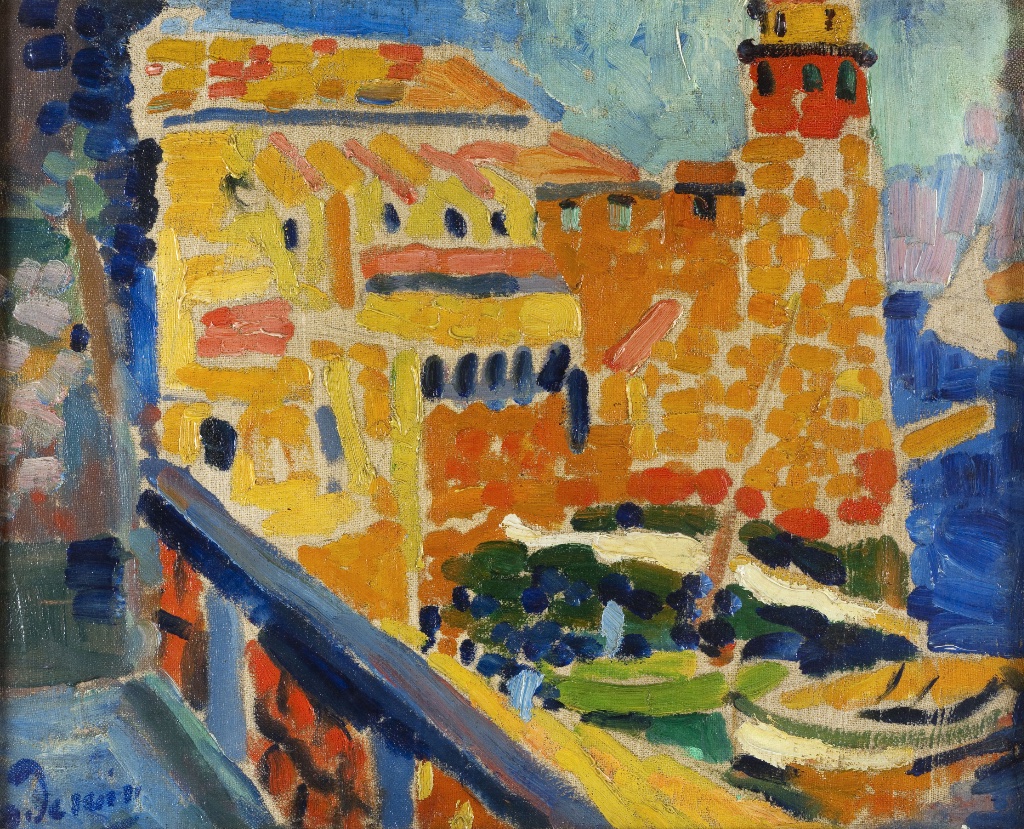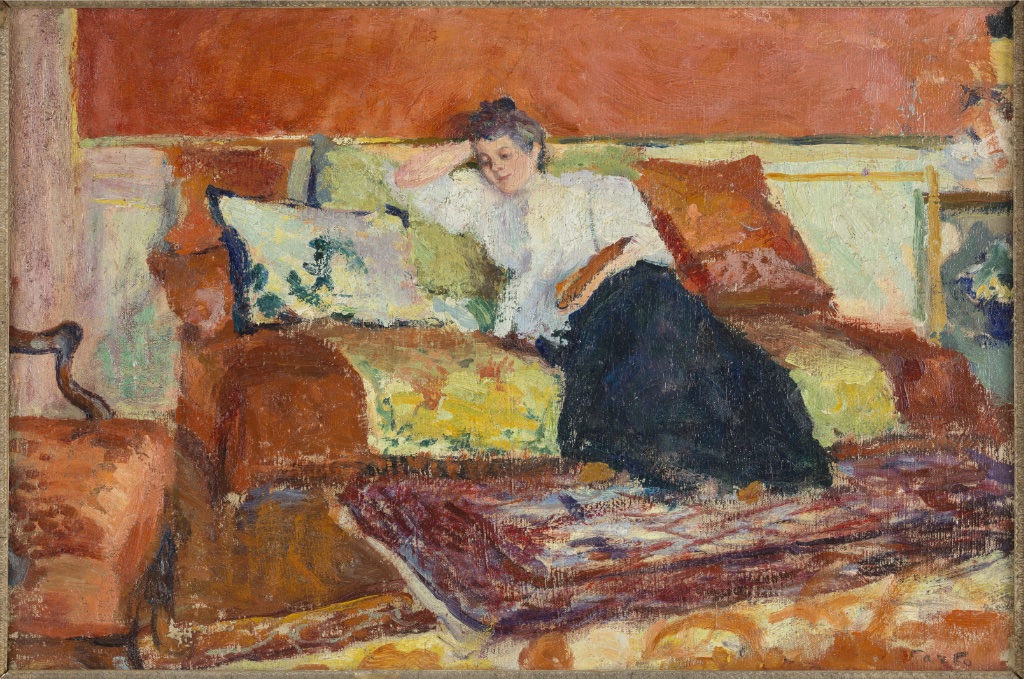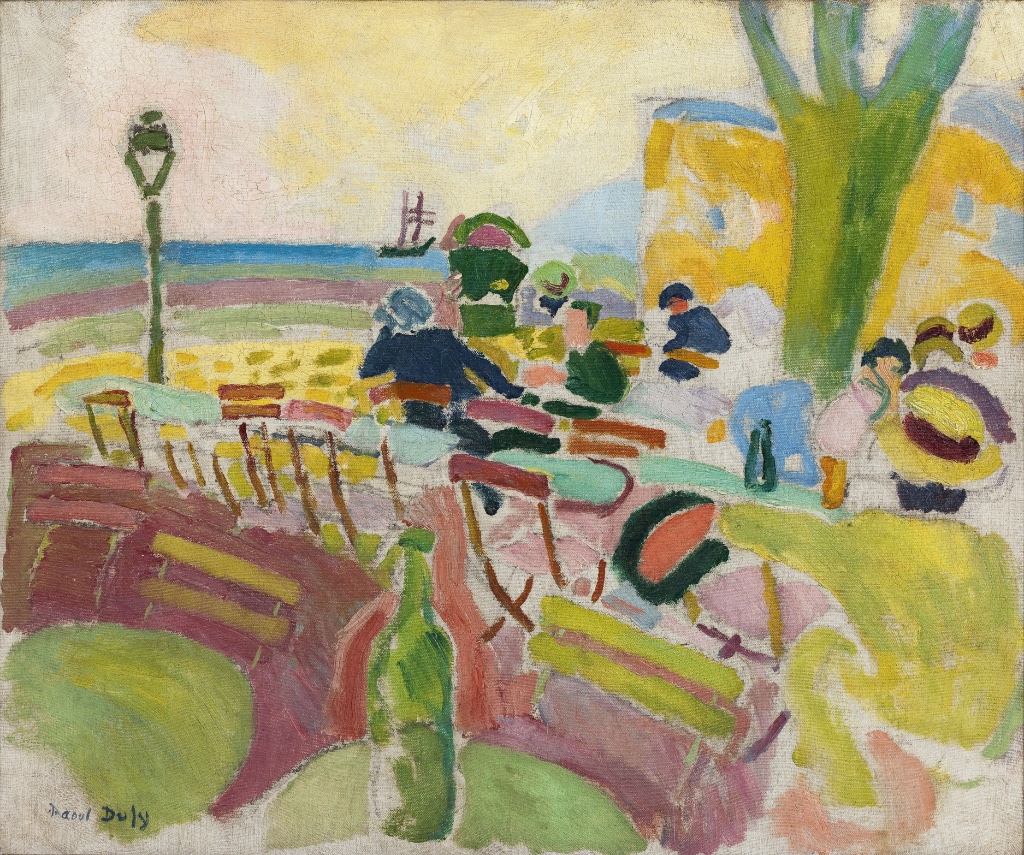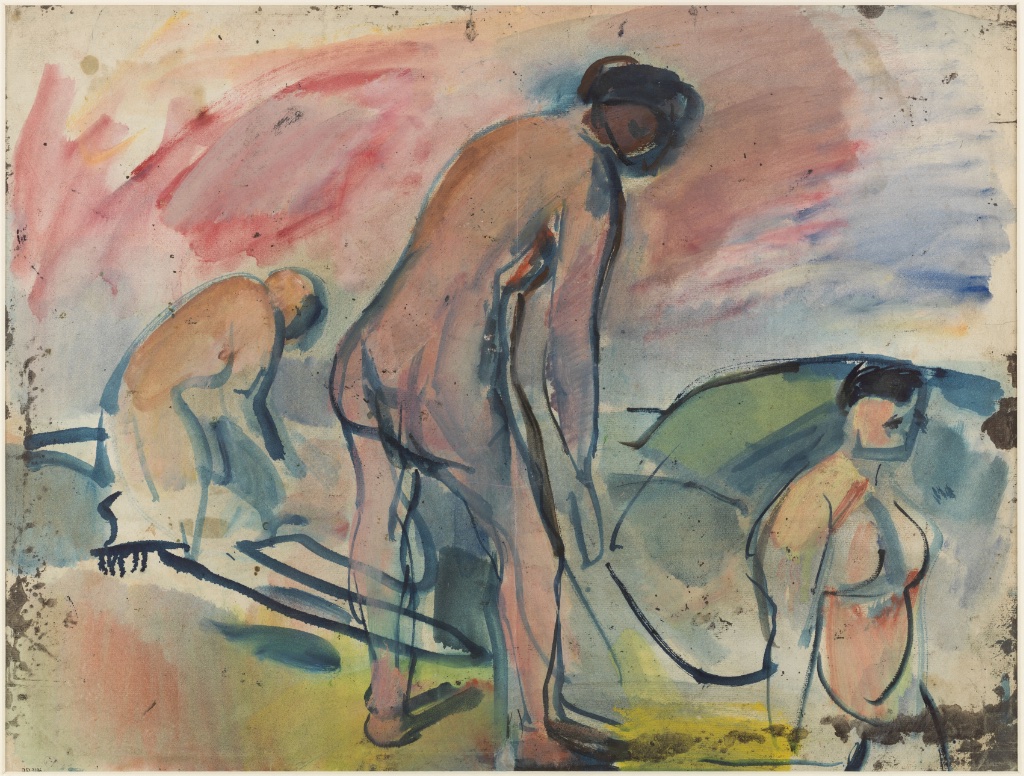
A visit to this year’s summer exhibition at the famed Pierre Gianadda Foundation in Martigny, Switzerland, makes a great weekend escape from Paris. The show celebrates the high-color Fauve movement, which, strictly speaking, had its heyday from 1905 to ’08. The show, titled “Les Années Fauves,” however, also takes in the pre- and post-Fauve years, offering a broader view of the origins and ongoing influence of the Fauves, beginning in the year 1898, when the painter Gustave Moreau died.

Although Moreau’s eccentric Symbolist paintings have little in common with what came after – except perhaps a taste for strident colors – Fauvism might be said to have sprung from his studio (now a beloved Paris museum). No fewer than five of the major Fauve artists – Henri Matisse, Albert Marquet, Henri Manguin, Georges Rouault and Charles Camoin – were students of Moreau, who did not encourage them to follow his style but to seek their own way.
The Fauves (famously given the name, which means “wild beasts,” by a critic after viewing their first show) had few intellectual precepts but leaned toward the simplification of forms and the use of pure color in an attempt to “speak directly to the eye,” as curator Jacqueline Munck puts it. Fabrice Hergott, director of the Musée d’Art Moderne de Paris, which lent most of the works on show, points out in the catalog that “much more than a school or a group, it is a community of convictions that came together around a community of sources like Gauguin, Van Gogh, Toulouse-Lautrec and Cézanne.”

While the exhibition contains many stunning pieces, it seems a bit tame for a show of art by “wild beasts,” perhaps because of the wider time scope of the exhibition. It was surprising to see only a couple of paintings by one of the movement’s “wildest” proponents, Maurice de Vlaminck – including the lovely but not strictly Fauve “Forêt” (c. 1910), in the colors of Cézanne (whose strong influence was also obvious in the many depictions of bathers by various artists) – although a number of ceramic pieces by him (and others, including Matisse and Rouault) are on show.

Rouault and Raoul Dufy, neither of whom had quite found the style they later became famous for, are overrepresented but welcome, as is Kees van Dongen, whose eventual mannerisms could also be seen forming in these Fauve paintings.
André Derain’s Fauve works are deservedly well-represented in terms of both quantity and quality, but one can only wonder why Picasso’s definitively non-Fauve Blue Period painting “Harlequin: Child and Dog” (1905) is included in the show. Apparently, simply because he was active at the same time and place as the Fauves.

A visit to the Gianadda Foundation is far more than a visit to temporary art shows like “Les Années Fauves.” Its sculpture garden – with works by many of the 20th-century greats, from Rodin to Barbara Hepworth, Alexander Calder and Niki de Saint-Phalle – is a joy. Other temporary exhibitions currently on show include “Nadar” (through Jan. 21, 2024), featuring the famous portrait studio’s photos of Sarah Bernhardt and Réjane; “Leonardo de Vinci: Inventor” (through Nov. 2023): and “Léonard Gianadda: 80+ Years of History,” the handsome black-and-white photos of the foundation’s founder (through Nov. 2023).
The foundation is also home to a fascinating automobile museum that goes back to the early days of motorized vehicles, beginning in 1897 and continuing to 1939. Two permanent exhibitions feature a small collection of paintings owned by the foundation (many of them by Ferdinand Hodler) and a collection of works by Sam Szafran. Roman ruins have been excavated on the site, and classical concerts featuring stars like Cecilia Bartoli, Jordi Savall and Renaud Capuçon are held regularly.
No one can say that the foundation is not eclectic – it’s a veritable one-stop culture shop in the heart of Switzerland.
See our list of Current & Upcoming Exhibitions to find out what’s happening in the Paris art world.
Favorite